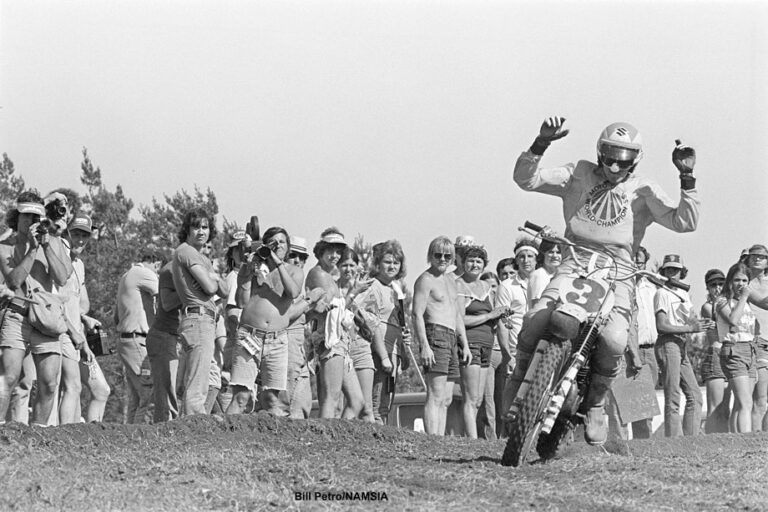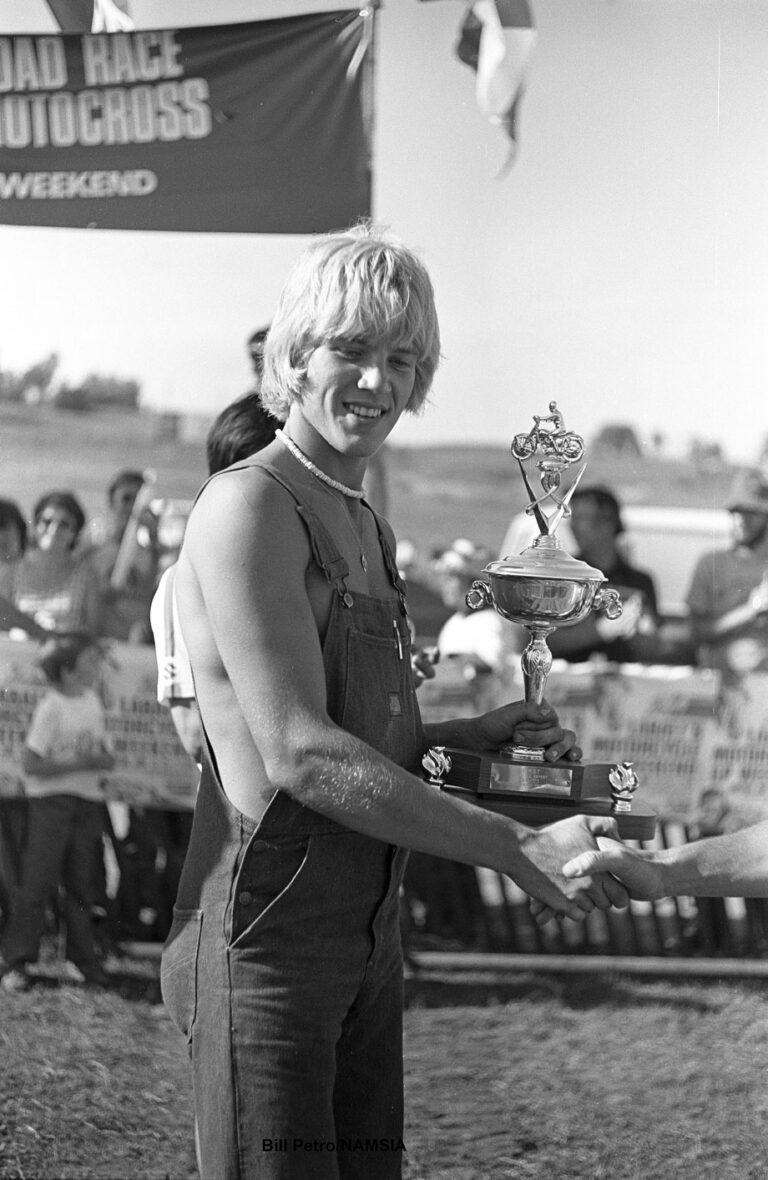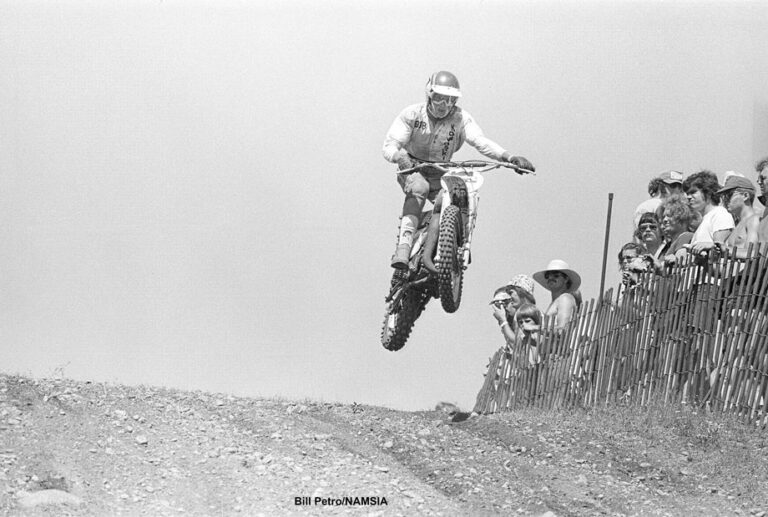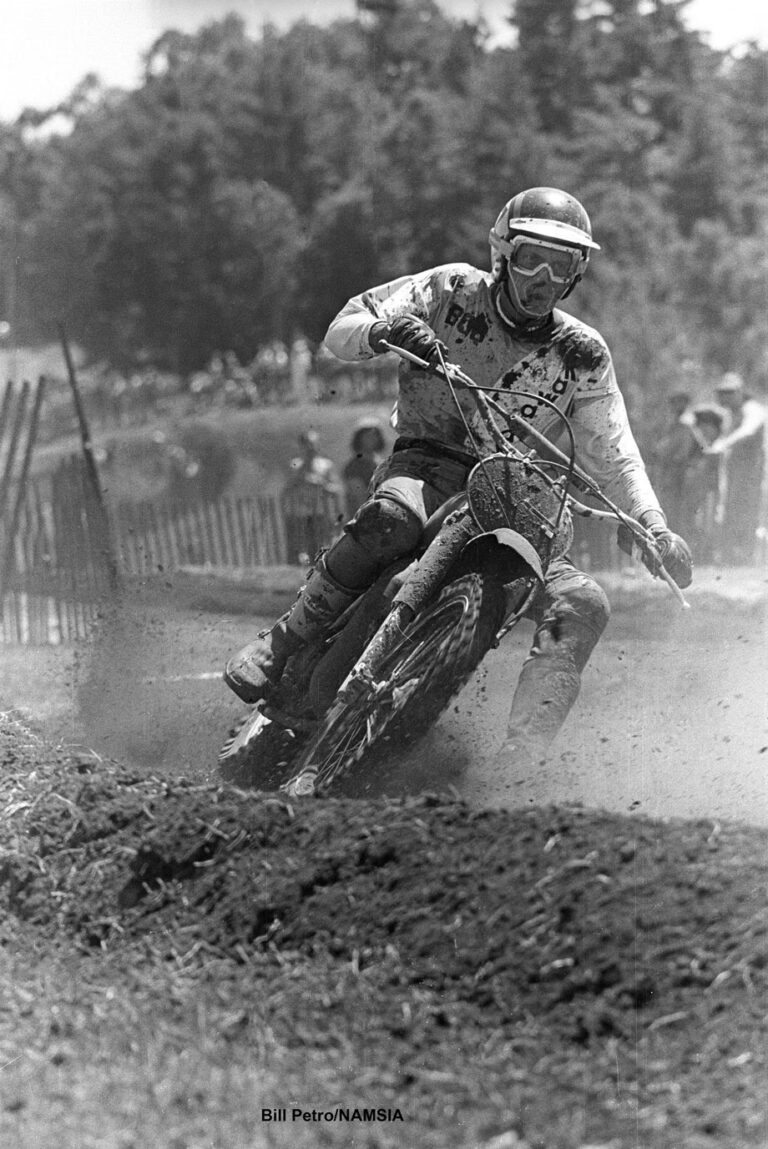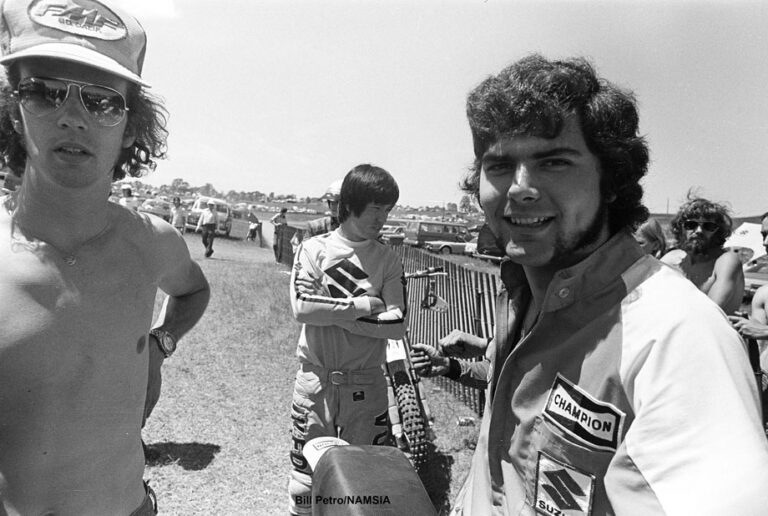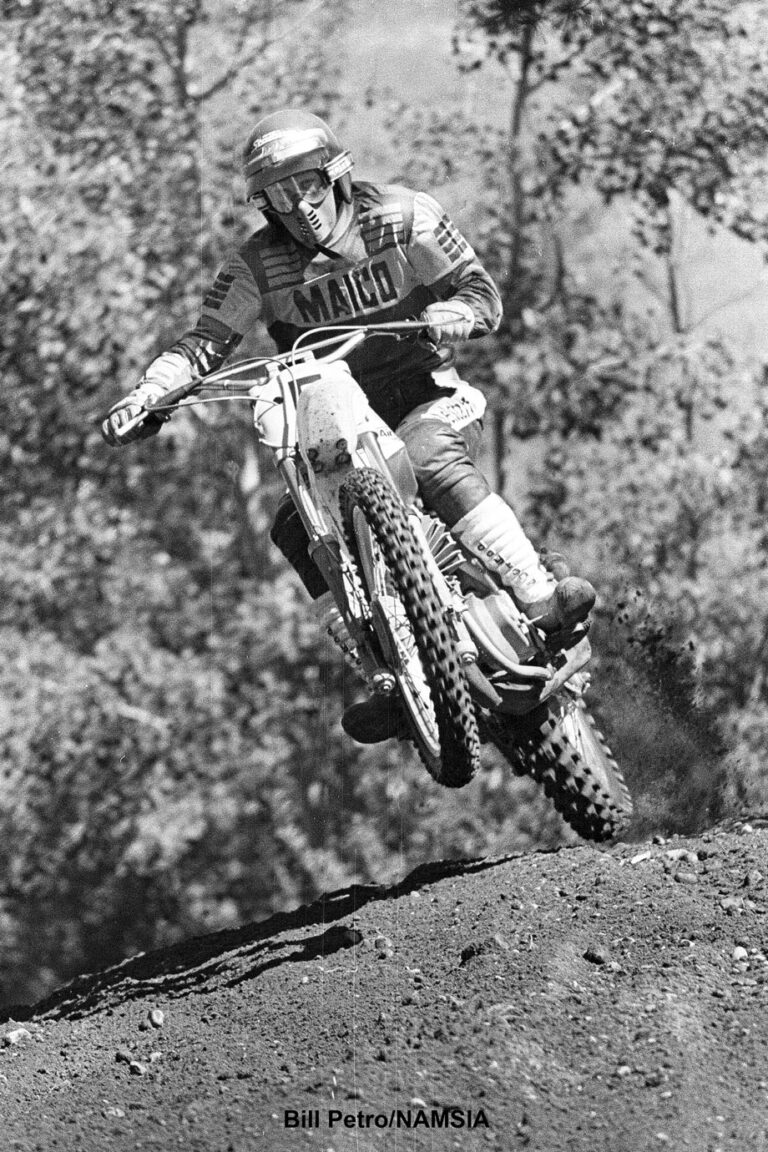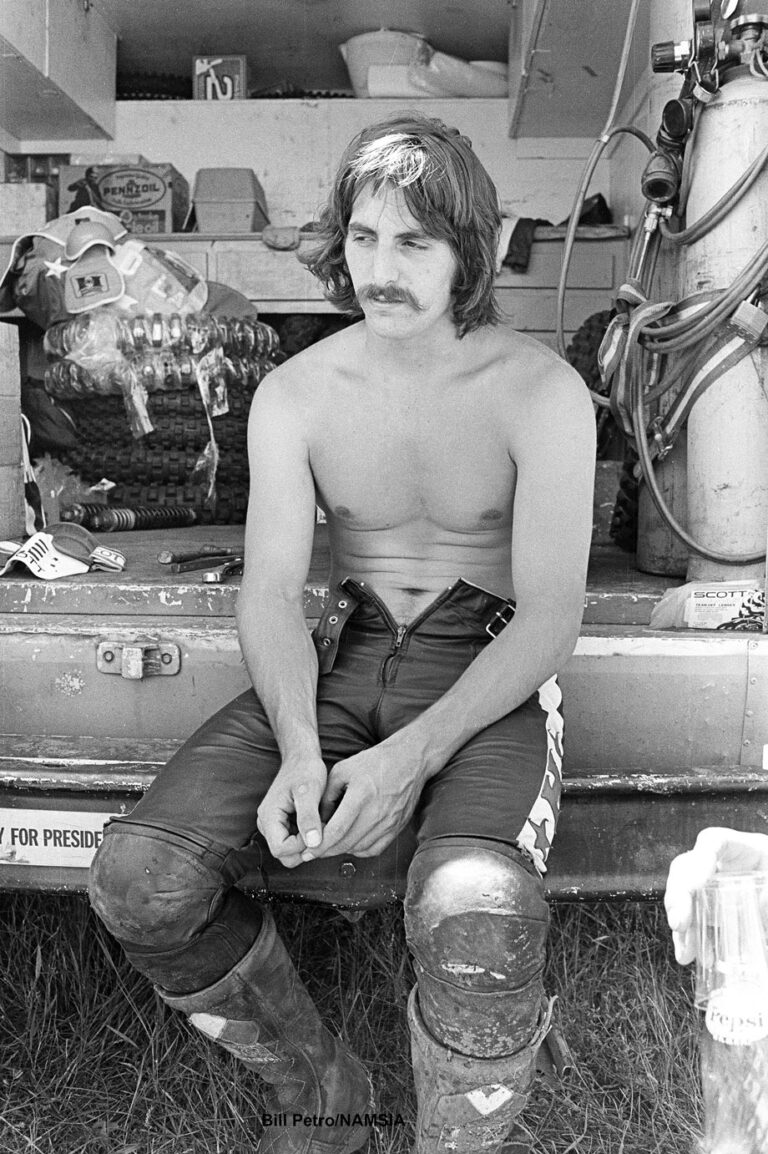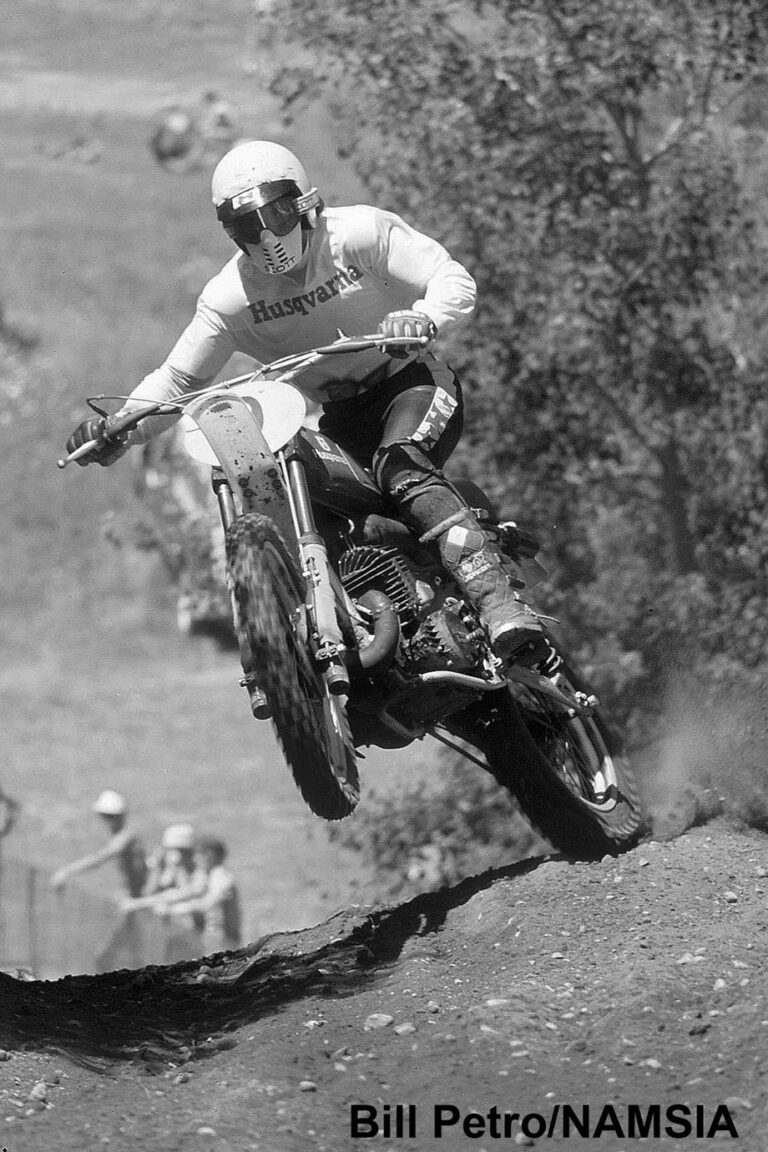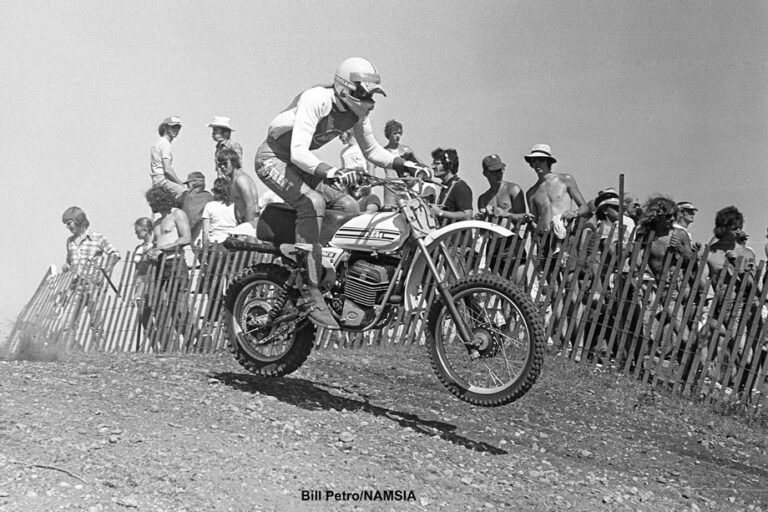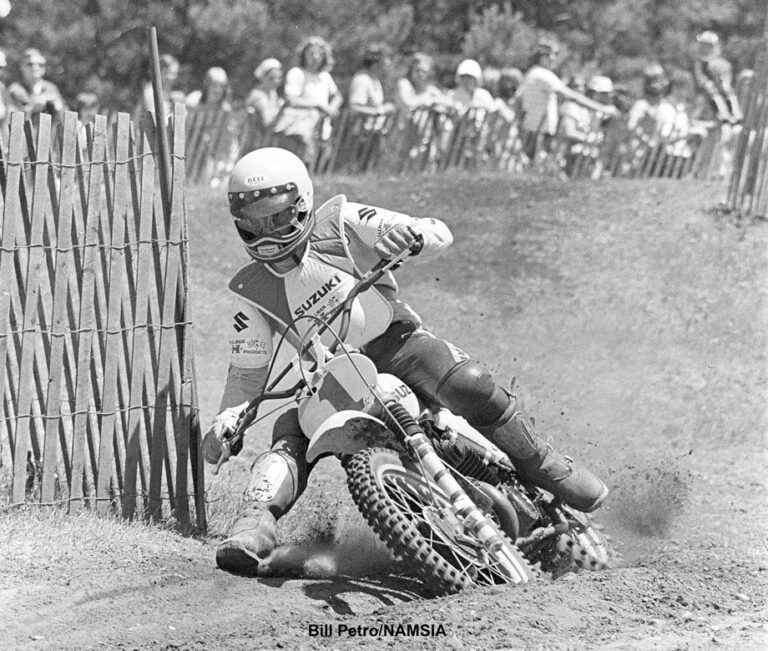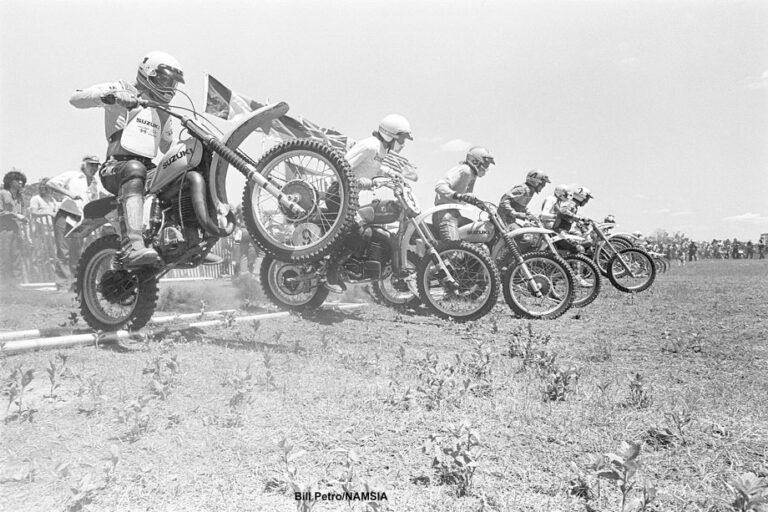Following Canada’s biggest ever motocross event at Copetown in 1975, the land was sold to make way for a new highway, so a new location was needed to hold the 1976 race. The infield at the Mosport road race facility proved to have all the challenging qualities that Bob Kelly needed to build one of his signature racetracks. So with the beginning of a new chapter in Canadian Motocross, why not schedule a major road race for the same weekend, add the sponsorship dollars of a major beer company, and you have one exciting motorcycle race weekend. The weather was hot and dry but that did not deter the crowds from showing up. It may not have topped the Copetown attendance the previous year, but it sure was close.
The week prior, Gerrit Wolsink dominated the rest of the world-class riders with back to back victories at the US GP in Carlsbad, California. This included Suzuki teammate Roger DeCoster who was looking for his fifth world 500cc title. The fact that DeCoster was not on his game due to lack of sleep because of the birth of his son the night before, took nothing away from the fact that Wolsink was invincible again, winning both motos with dominating ease.
Wolsink set the stage for his Mosport win by putting his Suzuki through the qualifying laps fastest by 2 seconds over his closest rival, young Belgian Jaak Van Belthoven and his KTM.
At the start of the first Moto, Germany’s Adolph Weil (Maico) and American Brad Lackey (Husqvarna) took the early lead. But by the end of the first lap Wolsink passed and established a firm lead over Lackey, Weil, DeCoster, Swede Ake Johnson (Maico) and 19 -year-old brit Graham Noyce (Maico). DeCoster passed Lackey and Weil, and continued to hound teammate Wolsink to within a few feet on lap 12. As if he had just woken from a sleep, Wolsink started to pull away from DeCoster and the rest of the field to finish the first moto a full 43 seconds ahead of DeCoster. Behind him were Brad Lackey, Ake Jonsson, and Jaak Van Velthoven. Of the thirteen finishers, four raced under the Canadian flag. Jim Turner, Nicky Kinoshita (non-Canadians racing in Canada) and Larry MacKenzie finished at the back of the pack in that order. Jan Eric Saalqvist retired after seven laps with pain in his injured shoulder.
The second moto started much the same as the first with Adolph Weil taking the first corner only to be passed by Wolsink, Noyce, DeStefano and Lackey before the end of the first lap. DeCoster was out of the picture riding in 11th place; he eventually pulled into the pits complaining that the bike was not running well. With Wolsink showing the same dominance as in the first moto, Brad Lackey and Graham Noyce battled the whole race for the second spot with Lackey finishing ahead at the end of the moto. Lackey’s second and his third in the first moto gave him second overall for the day.
Jaak Van Velthoven’s remarkable charge from his 13th place start ended in fourth place, barely three bike lengths behind Noyce. Along with his fifth place finishes in the first moto, he secured the third overall for the day.
With a distant 2nd in the first moto and a DNF after 2 laps due to an ill running bike in the second moto, DeCoster could do no better than a 5th overall. Wolsink’s Canadian win gave him a temporary lead in the World Championship standings over teammate DeCoster with a margin of 170 to 166. The situation would reverse itself the next weekend in England when DeCoster’s 3-2 finishes returned him to the top of the world standings.
Yamaha Motor Canada’s Japanese import, Nicky Kinoshita, was eighth, and combined with his 11th place finish in the first moto, it gave him three world championship points and a 10th place tie in the results with Adolph Weil and Suzuki Canada’s Californian import, Jim Turner.
Larry MacKenzie, the only Canadian born rider to start the event, had last-place finishes in both motos after struggling with exhaustion, lost goggles and the weight of the 500cc class machine.
Even with Wolsink’s runaway win in the 500GP races, the competition behind him was still fierce, which gave the crowd something to cheer about. But the 250 support races with most of the familiar Canadian and US riders also proved to be world class, and had the crowd wondering who these riders were. Bob Levy, a relatively unknown young, up-and-coming western rider, was chosen to ride a very special hand-built GP bike sent over from Japan specifically for this event. Suzuki was the fastest thing out there and Kawasaki wanted to prove they could match their speed. So these specially built bikes were sent to Canada and the US to give Suzuki a run for the money. There may have been some controversy over the decision to give the bike to Levy, but if there was any doubt that the decision was the right one at the end of the day, you would have to be in another part of the world, because not only did Levy take the overall, he did it with the nail biting excitement that everybody came to see.
Familiar to most Canadians for his smooth consistent riding style, Japanese import Masaru Ikeda was expected to do well at this event as he had been dominating the national circuit up to that point. Levy, admittedly, was nervous as a lot of eyes were watching his performance. When the flag dropped for the first moto the battle at the first corner left Levy tangled with a couple of other riders and near last place. He knew he needed to pull out all of the stops. By the end of the moto Levy had knifed his way to second place with his sights set on Ikeda, but time ran out and he had to settle for second. US rider Frank Stacy, on a KTM, finished right behind Levy to take third.
The crowd was pumped, and because of a change in the schedule to give the international stars a longer break between motos, the support class was going back out for their second moto with only a short rest. This time the crowd got what they paid for. The second moto staged the kind of racing that gets talked about for years after. As expected Ikeda, Levy and Stacy fought from start to finish with many lead changes and the crowd cheering everywhere. I wouldn’t doubt if the international riders were right there watching this race with everyone else. This time Levy found the right moment to make his final move past Ikeda and did not let him by to the checker.
Thanks to a major beer company’s sponsorship, this international 500cc GP was held on the same weekend as and national Road race championship. It was a very exciting weekend that probably never happened again. Very few facilities can boast this ability.
In 1977 the 500 GP would move to Québec and then after an absence in 1978, show up back at Mosport in 1979 only to disappear again until 1984 at MotoPark. It is a bit unclear as to why this happened, but I hope to shed some light on this next month.

